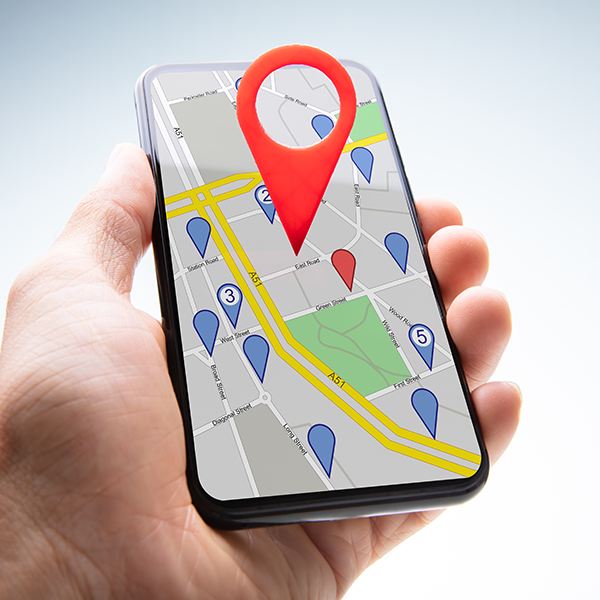The Texting Disconnect: Why Businesses Should Keep Up with a Growing SMS Habit

Texting has become as ubiquitous as the telephone itself with U.S. customers texting more than ever. Consumers are using text messages for everything from sending a quick note to a family member to confirming a dental appointment.
Despite its pervasiveness and ease, consumers texting back and forth with businesses isn't as common. Even though customers are admitting in various polls and surveys that they want to be able to text businesses.
Changing times
Let's start by looking at how consumer behavior has changed. A Gallup Poll highlights how texting is now a dominant way of communicating for Americans under 50, with most of us now using cellphones as opposed to landlines. This shift is a sign of a pivoting cultural and social change that has been taking place in the recent decades. It used to be that communication had to take place face to face, through written letters and the traditional landline phone. Today however, computer and smartphone adoption has been quickly growing and with it the rise of texting, cellphone usage and email as the top three commonly used forms of communication, followed by social media. Texting is the most widely-used and frequently used app on a smartphone, with 97 percent of Americans using it at least once a day. (Source: Pew Internet.)
The trend toward more texting is partly the increased use of mobile technology by consumers, but also its convenience factor and its high response rate (90 percent of text messages are opened within three minutes of being received). Perhaps this high open rate is due to the perceived urgency of text messages, and the fact that most people have their phones with them at all times. Or perhaps it is thanks to the brevity of the text message, as its content is limited to just a few strings of characters. Either way the attractiveness of sending text messages as a communication channel is certainly spurred by the rapid attention it generates.
Missed opportunities
While some customers are using SMS, the research would suggest that more consumers are willing to use this channel to communicate with businesses. A whopping 64 percent of people prefer text messaging versus calling for customer service and another 44 percent would rather send a text than stay on hold, according to the 2014 Harris Interactive Poll, "The High Demand for Customer Service via Text Messaging." The report also revealed that parents with children under age 18 in the household are also more likely to want to perform customer service activities through text messaging (61 percent) over those without children (43 percent). So something for marketers to take note of when trying to reach the parents that run a household with kids. (Source: eWeek) But are businesses listening to this trend and making changes to their customer service, sales and marketing channels?
Is there a disconnect between what customers want and what businesses offer? Some businesses may not have evolved their communication programs to allow for two-way SMS, giving customers the ability to communicate directly with their brand. The opportunity is there to capture new customers and keep and grow existing ones by taking advantage of CRM and communication technology to allow for this two way communication. Surprisingly one industry that hasn't adopted this trend fully is retail.
According to a new OpenMarket mobile messaging report, the large majority of retailers are not optimizing communications with customers by fully embracing texting. The results show that SMS was among the least frequently used methods of communication for retailers compared with email, phone, social media and mobile apps. Brands are, however, open to trying with over half of respondents who don't use SMS seeing the channel as an opportunity to drive revenue or improve customer experience.
What's next
So when should a business use SMS versus email or push notifications? The answer depends on the reason for the communication and how quickly a response is needed. A helpful article from The Next Web depicts some of the common scenarios when a business might take one of these tacks. Marketers should take note, the high open rates may be impacted if an organization isn't respectful of the medium by only sending relevant messages via SMS. For example, some information doesn't belong in a text message such as critical information requiring the user to take an action or details the customer might need later, such as receipts. These should be sent via other channels.
Sometimes a customer may want to initiate the dialogue via text simply to avoid being placed on hold. A surprisingly low 14 percent of calls are answered before being placed on hold (source: Businesstime.com). One way to get a business SMS program going is to dedicate a business phone number for this purpose so that its use can be easily monitored. This new way of approaching customer service can significantly increase customer satisfaction. Happy customers come back, and hopefully spend more. Smaller businesses can start small by only giving the number to VIP customers so their customer service staff can respond to texts in a timely manner. Once the experiment feels like a success it makes sense to expand from there.
The reasons to use SMS go beyond simply improving response rates and user experiences. The cost savings are something to consider as well. Calls cost customer service centers several dollars per conversation, whereas texts cost pennies per conversation. (Forrester and ContactBabel) It's relevant for B2B marketing too: texting in the sales process with a qualified lead can increase conversions over 100 percent (Velocify).
The key is to lay the proper framework in place so that texting doesn't become a distraction, or worse yet, a missed opportunity if it is neglected. Instead it's important to seek out and deploy the proper technology and customer relationship management (CRM) solutions. Many small business owners may not realize that there are cost efficient services today, thanks to cloud telephony, which allow for an office number to receive and send text messages. Within many organizations you may find that owners and employees alike are using their personal cellphone numbers to send and receive company-related text messages. This doesn't have to be the case. By utilizing the services of a cloud phone provider, a business can avoid the pitfalls of having employees use a personal cellphone number for customer service communications.
Customers are not only increasingly using this medium, but they are now expecting to be able to communicate with businesses in this way. Texting is no longer reserved for personal conversations and the opportunities for businesses to capture customer hearts and minds are very real.

Subscribe to Our Newsletter!
Latest in Mobile Marketing










